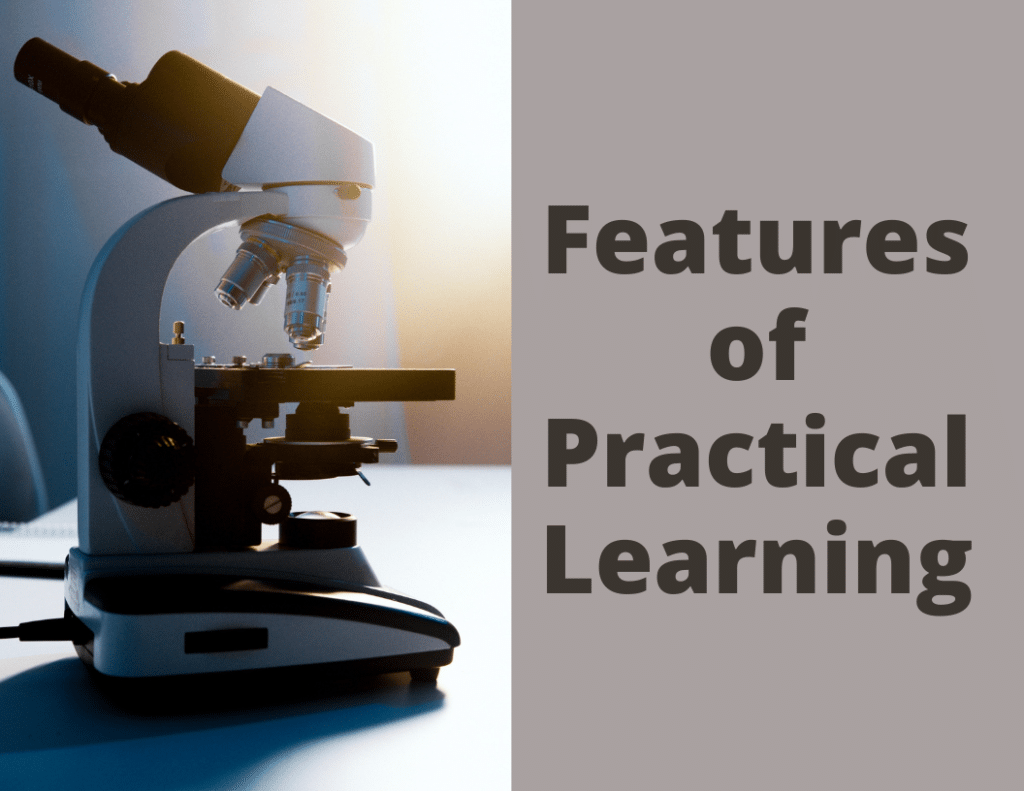The current generation is a tech-savvy, digitally enhanced lot. They are practical in terms of thoughts, education and societal norms. They have the ability to cross check and choose what works for them. With their distinct features and expectations they deserve teaching methods that incorporate practical knowledge along with theory.
As we digitize ourselves, as a society, we see technology as an essential component of our daily lives. To what extent is it critical that we, as educators, continually assess our methods of instruction? Educators must be aware of the distinctive qualities of the new generation of practical learners that enter the classroom. It is necessary that we continually bring in new concepts with their daily use in our lives. This is for a multitude of reasons: better retention, more productivity, better understanding of concepts and more.
Here are some of the features of practical learning that help students in holistic growth!
Creates a Connection to the Actual world:
If students don’t believe the information is relevant to their future careers, they may not consider it worthwhile. Data and concepts are put to practical use through experiential learning, resulting in useful outcomes. Students learn best when they are able to apply what they’ve learned in real life. The beauty of learning this way is that each student’s learning experience will be led by their unique outlook towards the world around them, everyone will interact with the material and the activity in a different way—and hence have varied results. Experiential education, therefore, mimics the “actual” world.
Perfection learned through Practice:
Practical learning allows students to truly understand what they learn. It may work for some people but reading can only help you retain information for a short period of time, not for long. Through practice, one can achieve this goal. For example, if you’re trying to learn a new language by reading, it won’t work until you’re able to talk or communicate with other people in the language. Regardless of what you read, it will quickly be forgotten. The more you practice, the better you will speak the language.
Use of Pictures and Other Visual Aids:
A picture is worth a thousand words. According to research, students are more likely to remember and recall knowledge if things are depicted in images – photographic memory. Visuals are more effective at conveying information because they are more efficient. Instead of droning on, you might encourage your pupils to draw or write out a visual representation of what they’ve just learned. Teachers can demonstrate better in class by using topography, physics experiments using household items, chemistry examples using food, etc. This makes it not only exciting but also more receptive for the students. The use of smart boards, PowerPoint presentations to show images and videos too are very helpful.
Students Steered in the Right Direction:
There are many experiential learning projects that are geared toward a job since they are based on real-world activities. These activities help kids find and cultivate their talents, abilities, and interests. As a result of this self-discovery, kids have a better idea of what they want to do in the future. This includes their future education and jobs.
Management of time:
It’s common knowledge that deadlines and time management go hand in hand, especially in the workplace. In schools that focus on practical learning, students are taught time management from the start. They are better equipped to handle jobs that require them to plan ahead of time and meet deadlines. Schools like NHIS guides students but allows them to make their own decisions, work independently and experience concepts in school that that will not have to be surprised by suddenly at a job.
Students won’t have a prospectus to assist them when it comes to deadlines as an intern. Ultimately, it’s up to the student to prioritize and accomplish their goals. Every industry today wants a graduate that can organize, commit and complete numerous jobs, or focus on separate assignments properly.
There are several crucial time management abilities, such as:
- Making a Decision
- Thinking strategically
- Problem-solving
- Multitasking
- Prioritizing
For majority of the best educators, hands-on experience is an essential element of instruction and a necessary part of their job. For the most part, it aims to teach students how to use empirical concepts and materials in a practical context. Students subjected to this way of learning can study, work and learn better throughout their lives.
Practical learning makes education relatable and memorable. It complements revision methods, value-based education, and parental involvement. NHIS is proudly listed among schools in north bangalore and best cbse schools in north bangalore.






